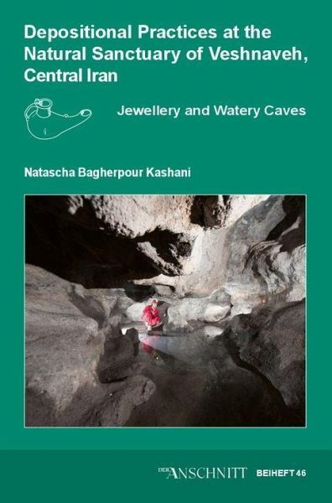Publications so far
0
| 1. |  | Kashani, Natascha Bagherpour: Depositional Practices at the Natural Sanctuary of Veshnaveh, Central Iran: Jewellery and Watery Caves. Verlag Marie Leidorf, Rahden/Westfalen, 2022. (Type: Book | Abstract | Links | BibTeX)@book{nokey,The mining archaeological excavations in Veshnaveh were among the first systematic of their kind in Iran. This is surprising, since the site itself had been known and described since the 1970s, but could not be investigated thoroughly until the early 2000s. The joint Iranian-German research in Veshnaveh was carried out as a part of the “Early Min- ing and Metallurgy in West-Central Iran” project, which had been continued until 2005. In this context, the mining area of Veshnaveh was comprehensively researched and, for the first time, underground excavations and surveys were carried out in the vicinity of the mining area. During our research of the mining evidence, it was the more surprising to discover ritual re-use of a Bronze Age copper mine. The excavations from 2001 onwards made it immediately clear that these deposits were not part of mining debris as one would have expected for mining activities. The findings suggested a different con- text and it was clear that this was a special rural sanc- tuary of pre- and early Zoroastrian cults. |
2022 |
|
 | Kashani, Natascha Bagherpour: Depositional Practices at the Natural Sanctuary of Veshnaveh, Central Iran: Jewellery and Watery Caves. Verlag Marie Leidorf, Rahden/Westfalen, 2022. (Type: Book | Abstract | Links | BibTeX | Tags: Bronze Age, Copper, copper base, Metal Resources, Mining, Qom, Religious structures, Resources)@book{nokey,The mining archaeological excavations in Veshnaveh were among the first systematic of their kind in Iran. This is surprising, since the site itself had been known and described since the 1970s, but could not be investigated thoroughly until the early 2000s. The joint Iranian-German research in Veshnaveh was carried out as a part of the “Early Min- ing and Metallurgy in West-Central Iran” project, which had been continued until 2005. In this context, the mining area of Veshnaveh was comprehensively researched and, for the first time, underground excavations and surveys were carried out in the vicinity of the mining area. During our research of the mining evidence, it was the more surprising to discover ritual re-use of a Bronze Age copper mine. The excavations from 2001 onwards made it immediately clear that these deposits were not part of mining debris as one would have expected for mining activities. The findings suggested a different con- text and it was clear that this was a special rural sanc- tuary of pre- and early Zoroastrian cults. |
